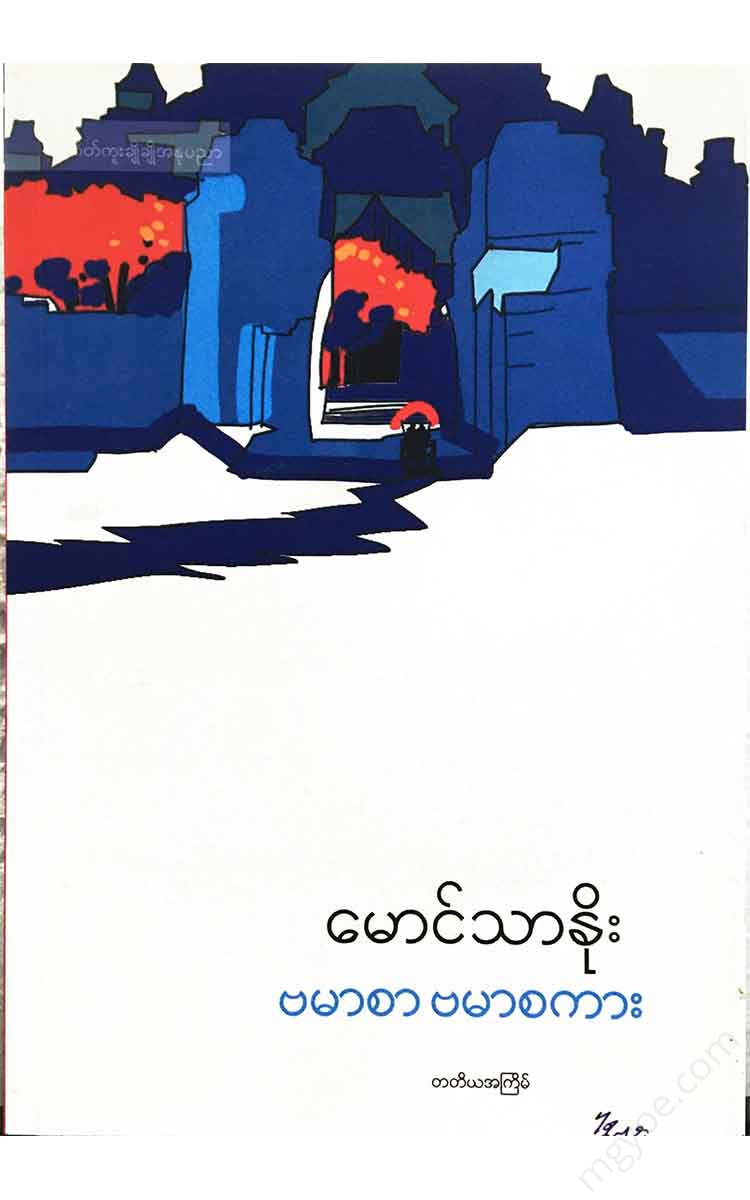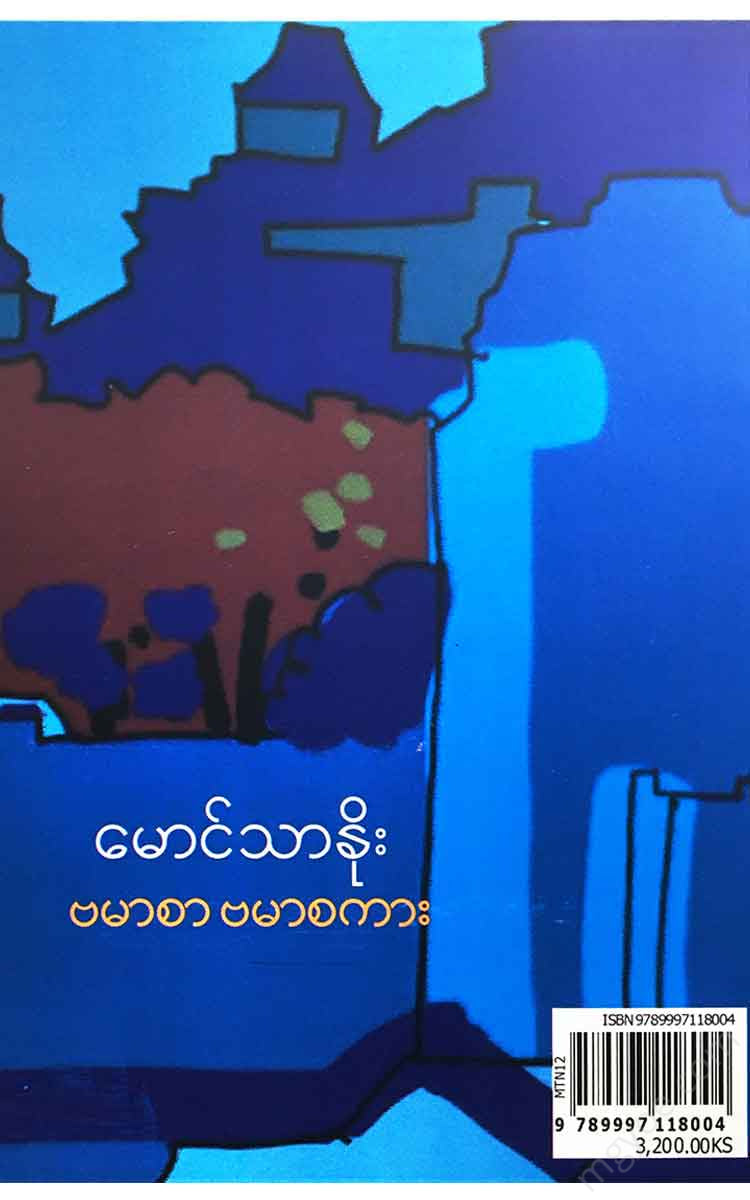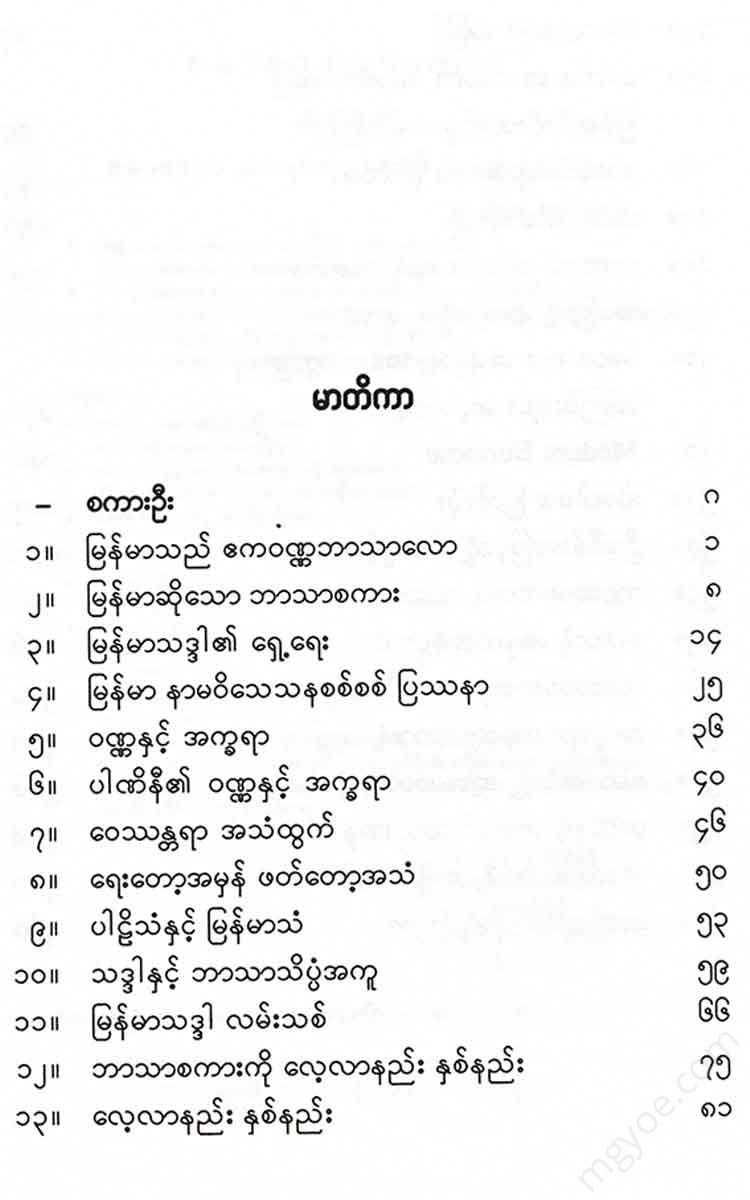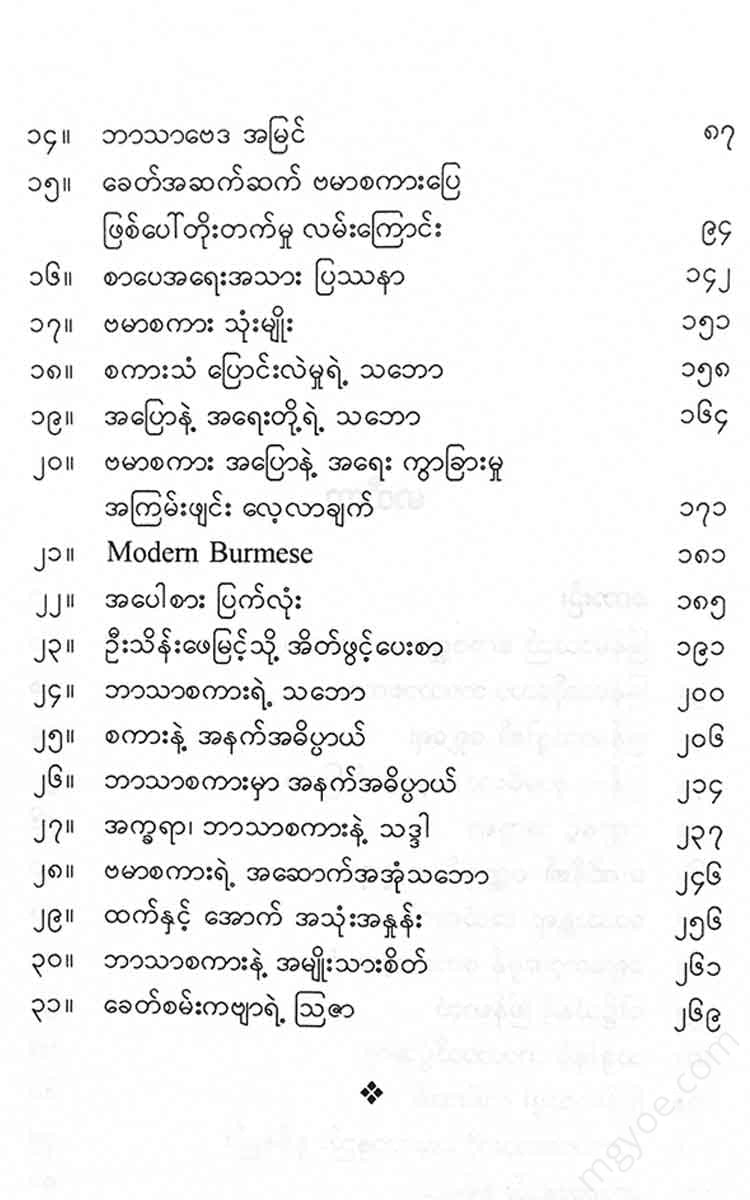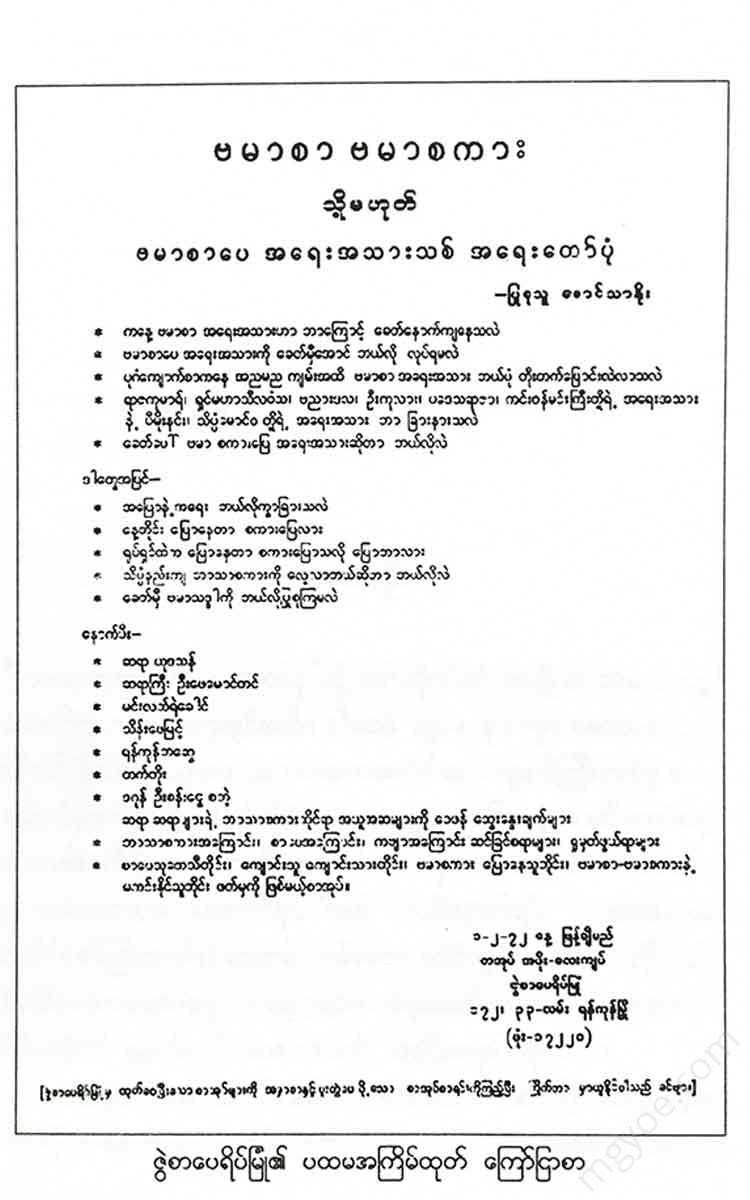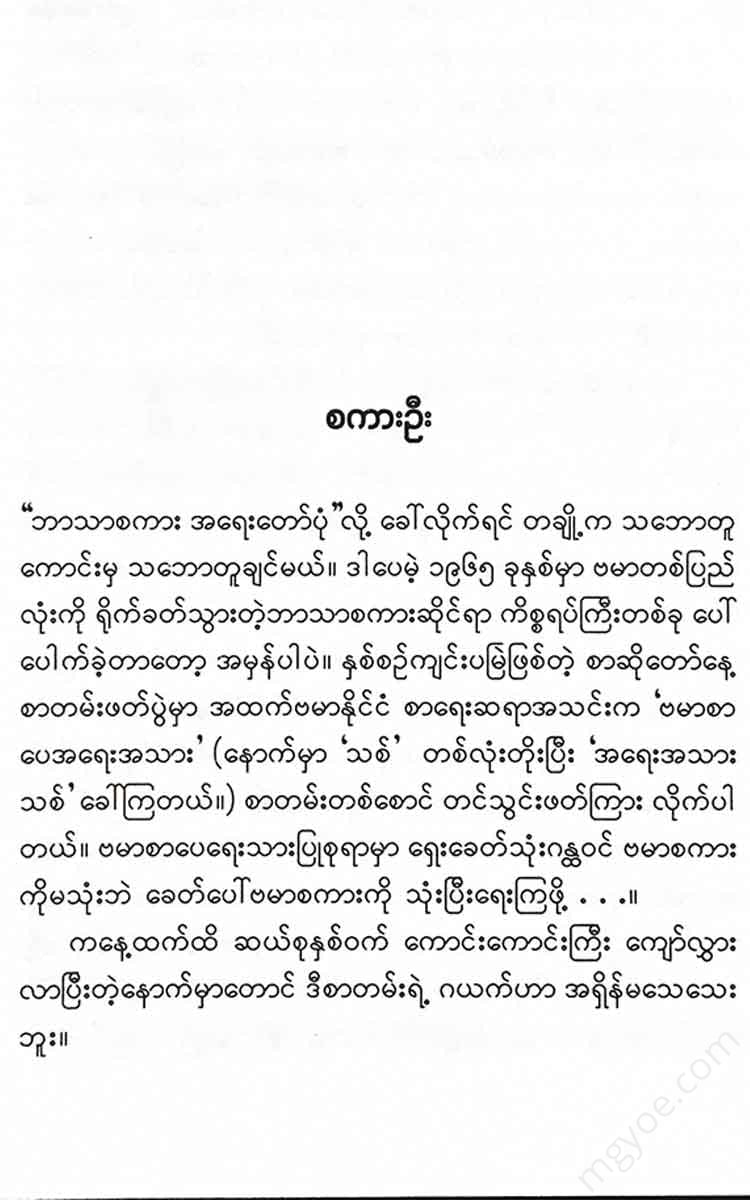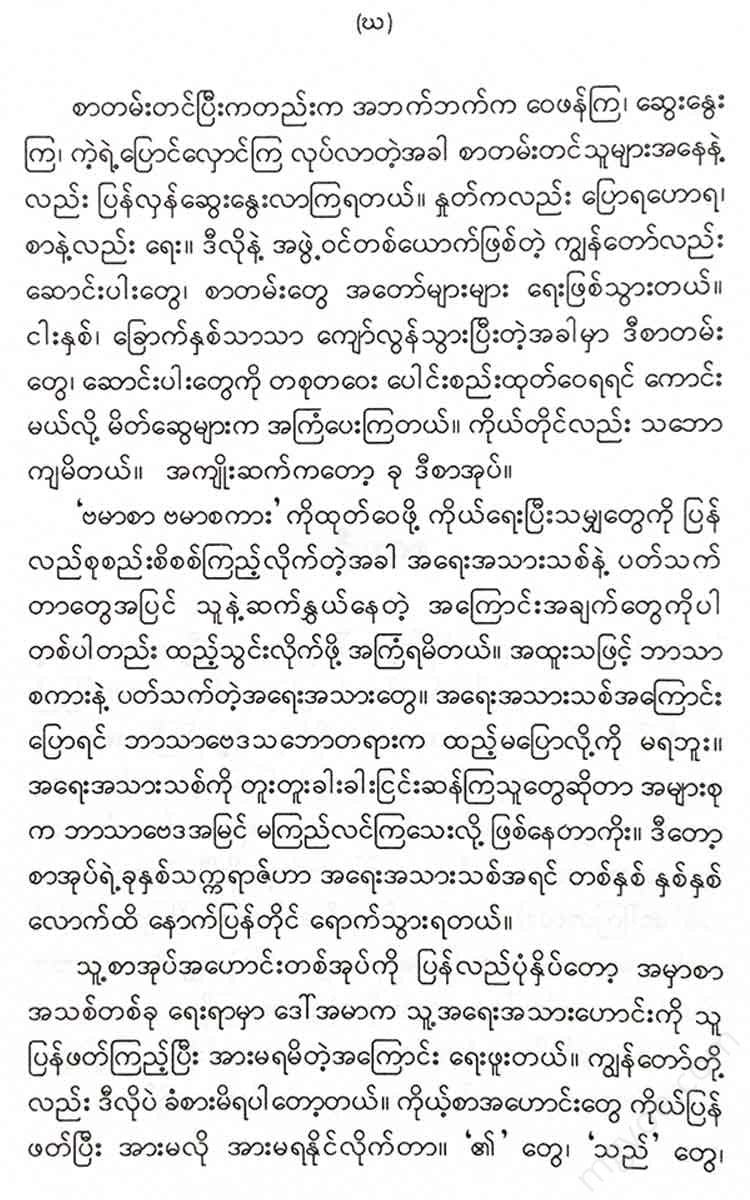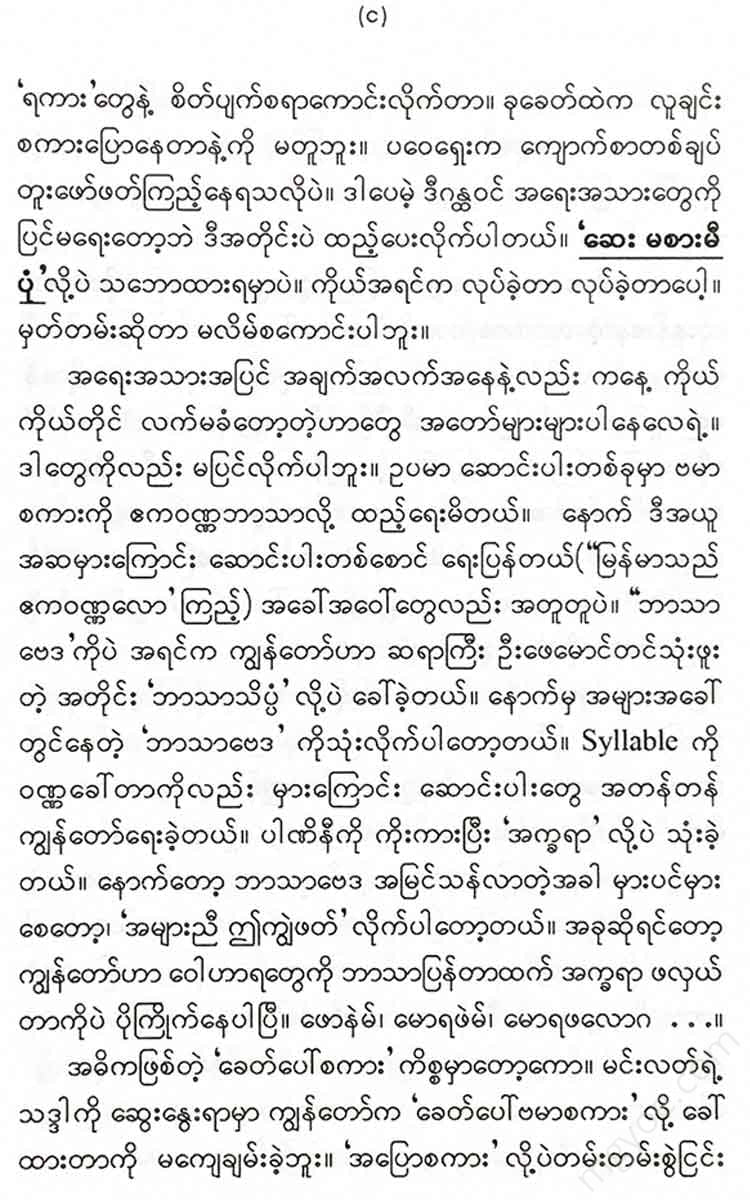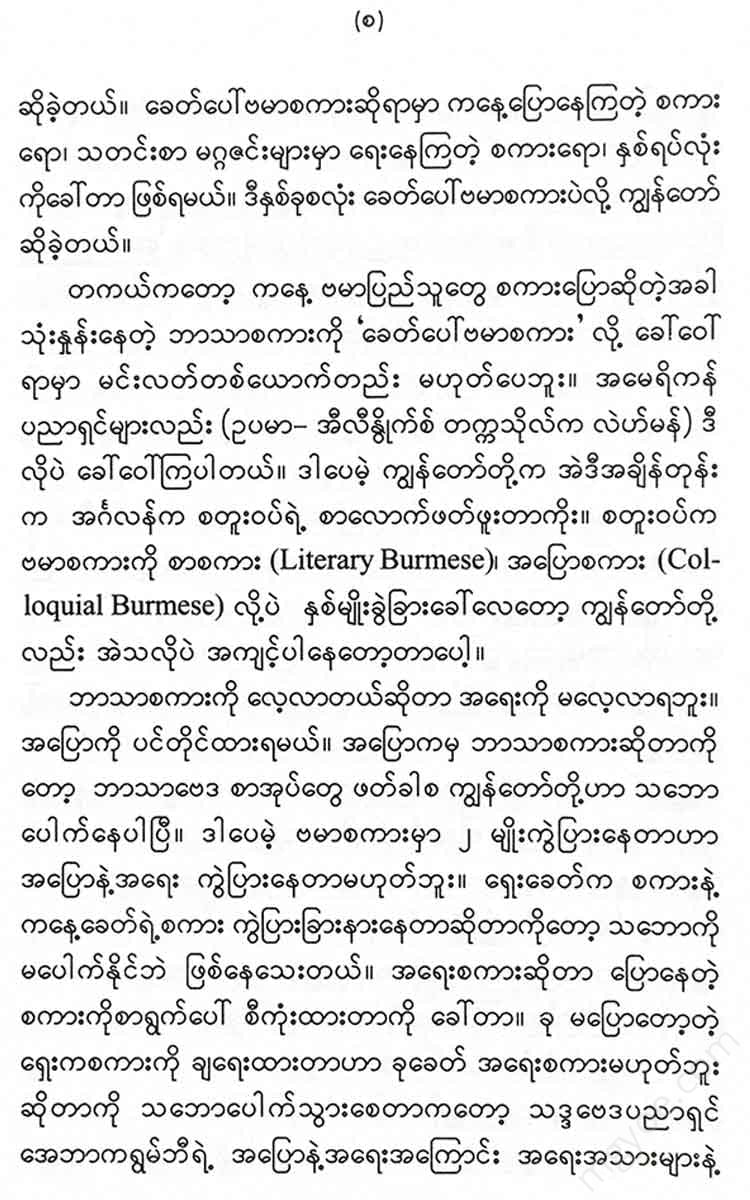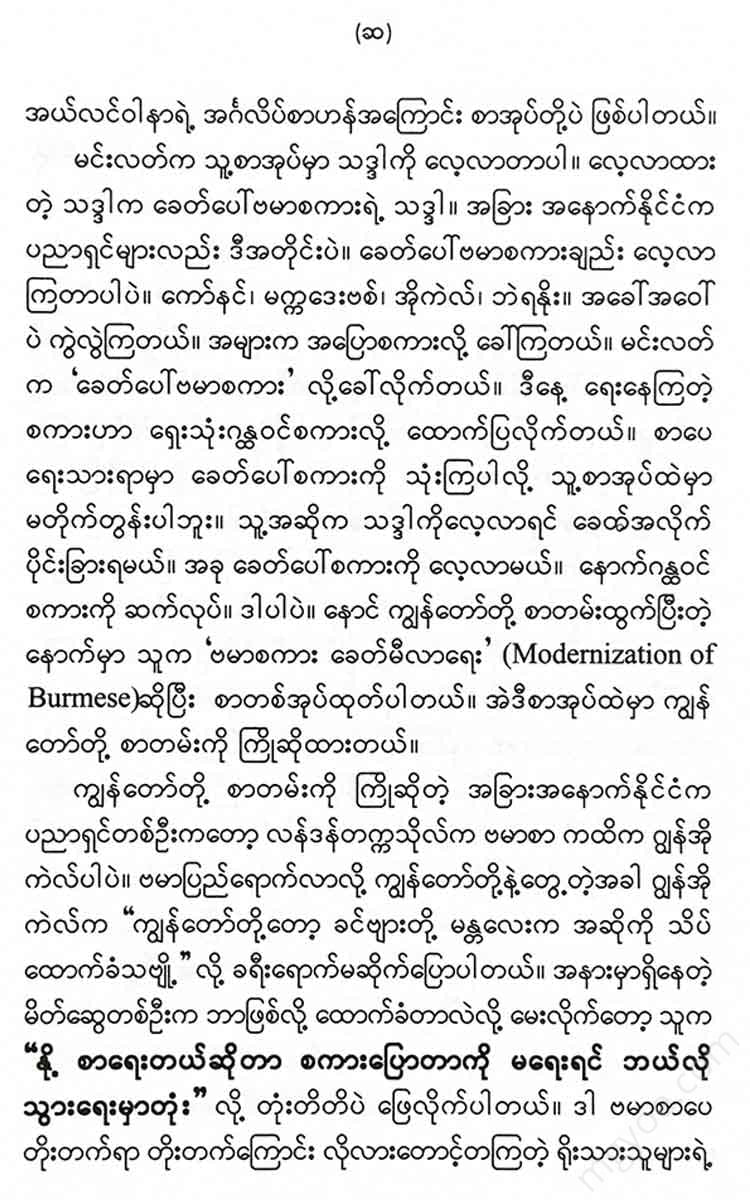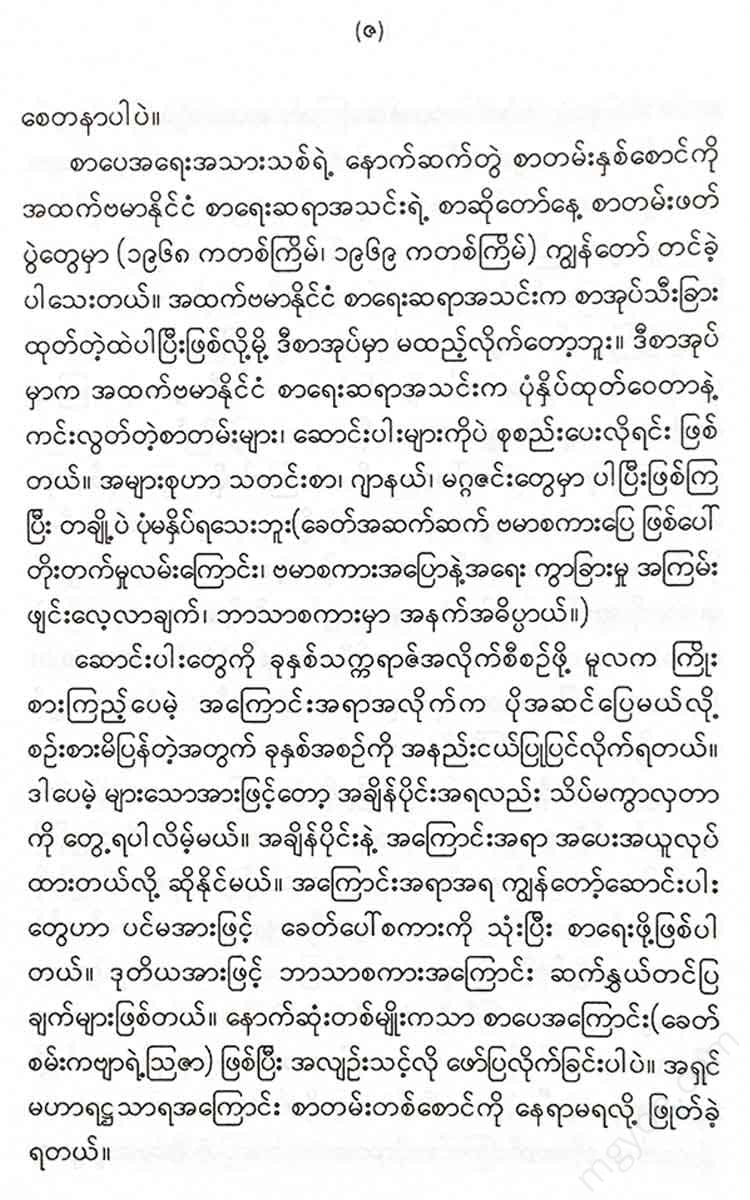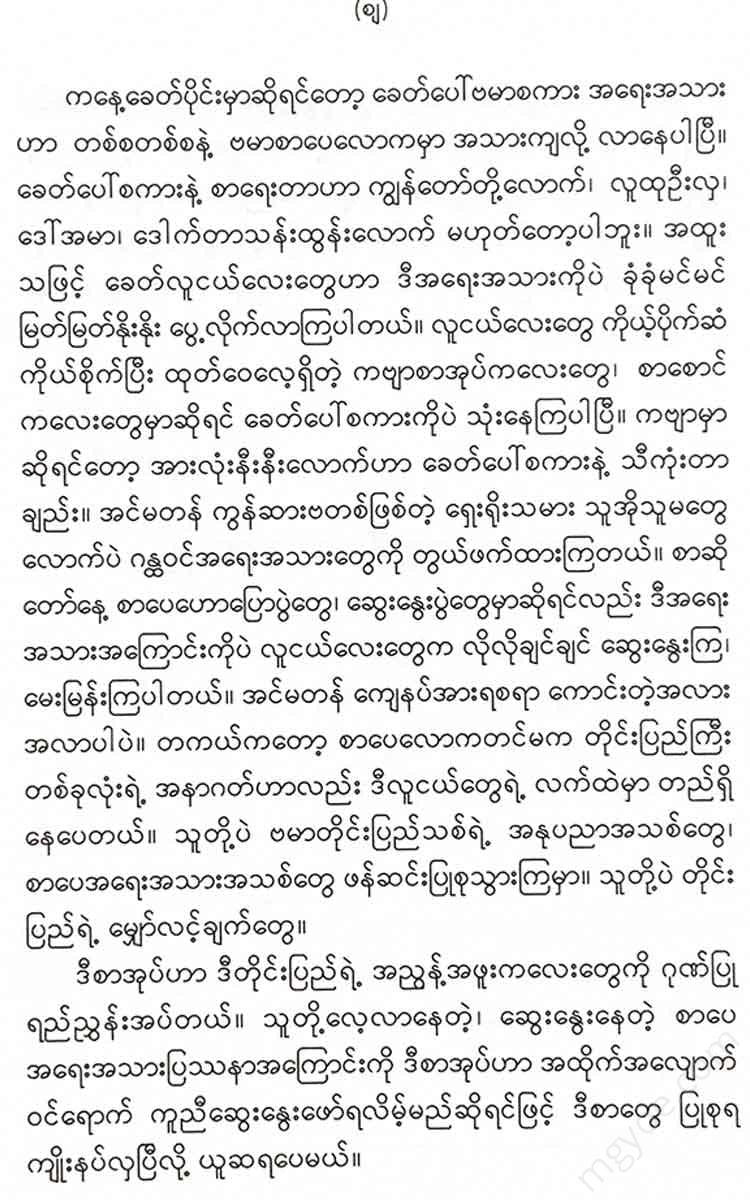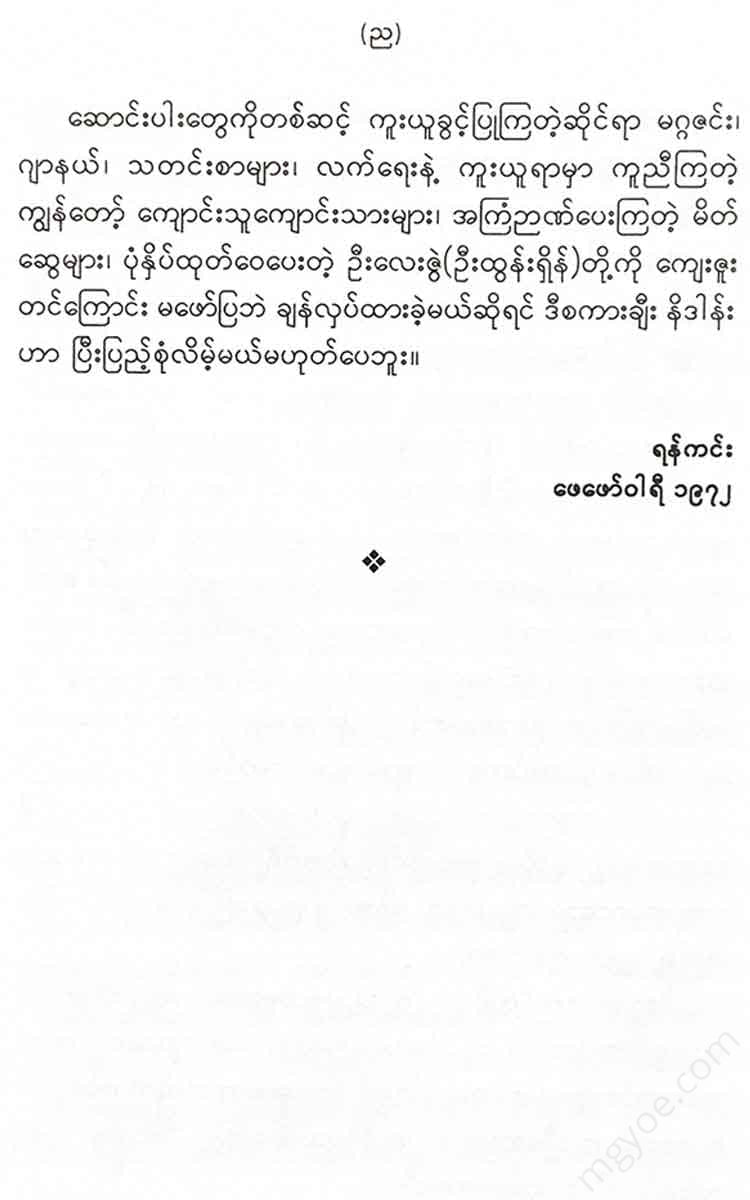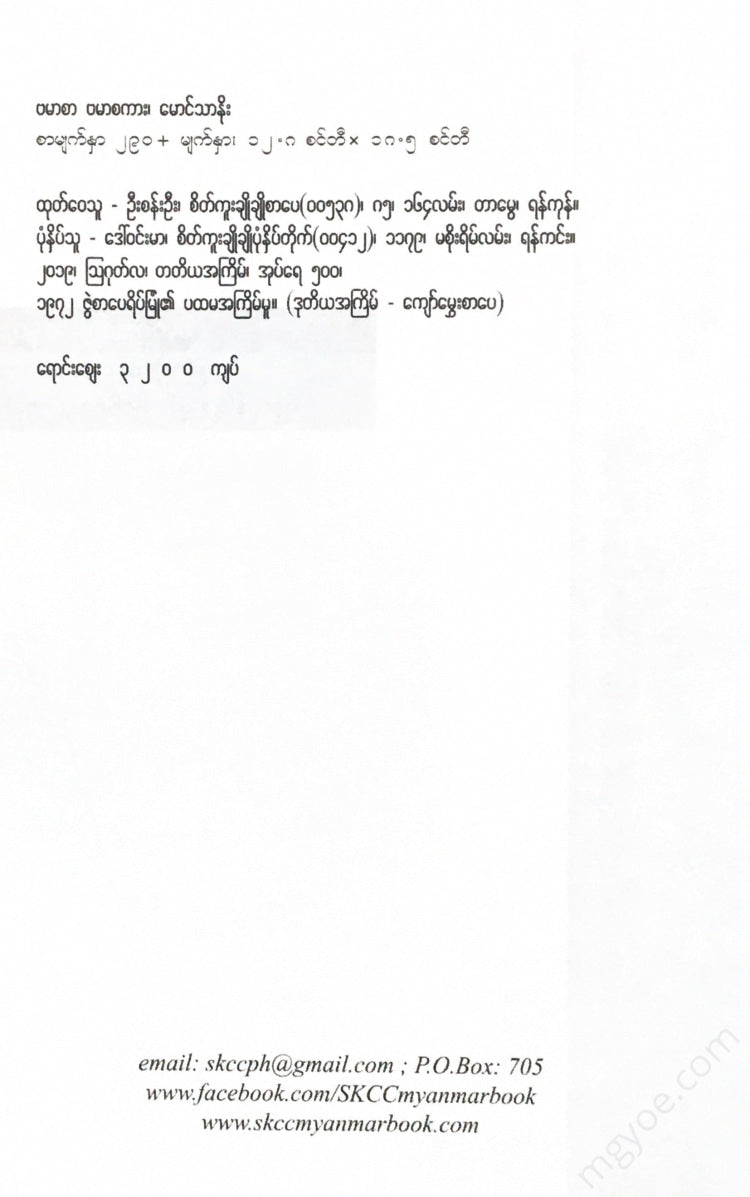စိတ်ကူးချိုချိုစာပေ
Maung Thano - Burmese language
Maung Thano - Burmese language
Couldn't load pickup availability
Is Myanmar a monosyllabic language?
The fact that the Burmese language is a monosyllabic language is a common belief in Myanmar today. It seems that after someone from the Ma Soe region said this, they all accepted it without any hesitation. The first to draw this conclusion were foreigners who studied the Burmese language, and as far as we know, the earliest person to say so was Saya Judasin. Saya Judasin wrote the following in English in the introduction to his book “Myanmar Grammar”:
“The true Burmese language is monosyllabic. Each word consists of only one syllable. However, with the introduction of Pali along with Buddhism, many polysyllabic Pali words began to be mixed into the true Burmese language.”
Burmese Grammar, P.3
There is no doubt about the depth of the Burmese language of Sir Judas. His Burmese dictionary is a solid document that is still quoted today. But what wise man can be “ever and forever pure”? Among the spellings given in Sir Judas’ dictionary, we find many spellings that we cannot accept today. His Burmese grammar is also incomplete, as it is concise, and full of errors. Sir Judas also “remembered” when he said that the Burmese language is one syllable.
According to Saya Yudasa, the true Burmese language is monosyllabic. Only three Pali words have plural letters in Burmese. The teacher was saying this casually. Later teachers seemed to be more precise. The teachers said that the true Burmese language is monosyllabic. If it has more than one syllable, it is no longer Burmese. It must be Tibetan, Chinese, Mon, Lisu, Mara, etc.
According to the teachers, only words like ‘ la ’ , ‘go’, ‘eat’, ‘people’, ‘dog’, ‘cow’, etc. should be genuine Burmese words, while words like ‘thing’, ‘nation’, ‘malaka’, etc. should not be genuine Burmese words, but should come from some foreign language. Accordingly, they searched for the origin of these polysyllabic words in Tibetan and Chinese dictionaries, but could not find them. They tried to find out the origin of these polysyllabic words in Tibetan and Chinese dictionaries, but they also tried to find out the origin of these polysyllabic words in Tibetan and Chinese dictionaries, and so on.
Here we must consider what is the true Burmese language. Where is there any indication of Burmese words that are not derived from any other language? It is difficult to point out that there are truly Burmese people, and it is difficult to point out that there are truly Burmese languages. Not only in Burmese, but in any language ( except for Japanese, which cannot be divided into language groups ), there are original connections with other languages. Therefore, languages can be studied by dividing them into groups.
It is not that polysyllabic words are related to foreign languages. Monosyllabic words are also related in the same way. It is also acknowledged by scholars that the Burmese “ນ” is related to the Chinese “ ນ ” and the Kachin “ທ” and the Burmese “ນ” and the Kachin “ ນ ” and the Chinese “ນ” and the Kachin “ນາ”. Similarly, the Chinese “ສີ” and the Tibetan “ສີ” and the Burmese “ ສີ ” and Chinese “ສີ” and the Tibetan “ ສີ” and the Burmese “ສີ” and the Chinese “ສີ” and the Chinese “ສີ” and the Tibetan “ ສີ” and the Burmese “ສີ ” and the Chinese “ສີ” and the Chinese “ສີ” and the Chinese “ ສີ” and
Just because they are related to all religions, can we conclude that Ekawanna is truly Burmese, or Bahuvanna is a religious difference?
However, to define the authentic Burmese language, we must define the words that have been used by the Burmese since ancient times, and only after careful study and analysis of the foreign language's origins can we see the difference. It is impossible to say that Ekawunna Moh or Diwunna Moh is a single word.
Many polysyllabic words that are common in Burmese can be listed. Some of the most common words are: ສາວ, ສາວ, ສາວ, ສາວ ( not Pali ) , ສາວ, Lisu Sha' Chinese "si, sizi" etc. "sa" and Tibetan "vi" "so", Abomiri " Agam" Kachin "Chinese" etc. "ka" is combined to form "sara". "Sat" means "paper". Tibetan has "zaba". "Ba" means something like Burmese "pa". In Abomiri language, "pa" means "corn", etc.
"Rice" is a combination of the Tibetan 'thaw', Chinese 'thaw, thaw', Abo Mirita' Mikir " the" meaning "big" and the Chinese 'im' Mikir 'an' Magu 'man' meaning "replace" and the word "min" meaning "big food" ( root food ).
As explained in this way, it may or may not be true. However, it is difficult to trace the source in this way, and in fact, these words have lost their original form and have become Burmese. It is best to just consider them as genuine Burmese words.
Again, we should examine what a word ( clause ) is in grammatical terms. There are still differences of opinion among scholars on what constitutes a “word” in Burmese grammar. It is too broad to discuss here. In short,
As far as I can tell, if we want to present a principle that is universally accepted, we must divide the sentence into word pairs. If we look for the basic unit of word pairs, we will get the word ". If we divide the word " again, we will get the original elements. It is important not to confuse that original element with the root of the word. (The root is like dividing the word Nation in English into the elements Nat and ion . In Pali, dividing "Buddha" into "Bhug" and "Ta".
Burmese root words can be roughly divided into two categories: lexical and grammatical. We can speak with either lexical or grammatical combinations. Grammatical combinations are not possible. Therefore, when two or more lexical words are combined, they are considered to be one word ( wa ) . Thus, the combination of two monosyllabic root words, such as “book”, “pencil”, “student”, etc., is considered to be one word ( wa ).
The Burmese language is different from both monosyllabic and prepositional languages. Since it is not a prepositional language, it does not change form according to the vowels, etc., and although a noun can be followed by “ທາ”, “ກ”, “ຄ” etc. ( as in Pali ) , it is not a prepositional language. Those who do not understand this point have mistakenly tried to base Burmese grammar on Pali grammar. Again, Burmese is not monosyllabic. As has been shown, there are many plural words. Again, monosyllabic elements can be combined. This can be confirmed by the fact that there is a system of sound changes according to the opening and closing syllables .
Worker
27 - 8 - 65
